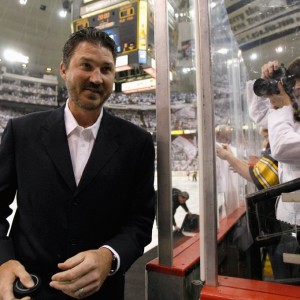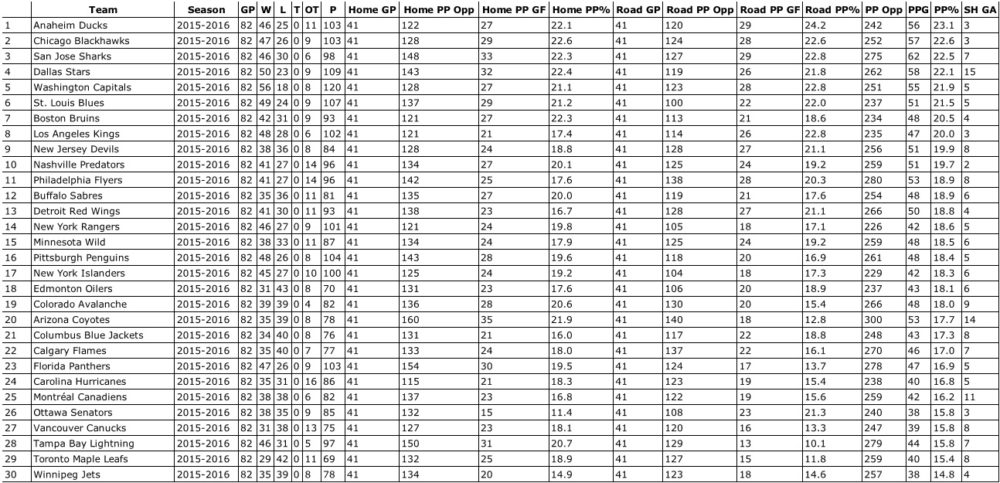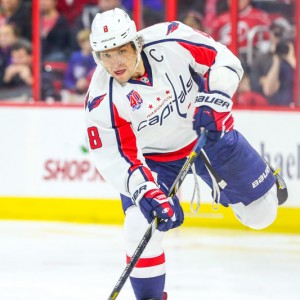Sixteen out of 30. That’s where a superstar-laden Pittsburgh Penguins team’s power play ranked at the end of the 2015-16 regular season. To say that there’s room for improvement would be underselling the problem.
They Both Want the Half Wall
You have two of the best players in the world. I think the problem is they both like playing the half wall.
Mario Lemieux

Team owner, Mario Lemieux took notice of this in Josh Yohe’s article back in 2012. Since then, not much has changed. As the Pens play it, you can only have one player manning the half wall on the power play. Last season, that concept seemed foreign to the team’s top two centers.
Evgeni Malkin enjoys posting up on the half wall just as much as Sidney Crosby does. Efforts to curtail Malkin’s drifting that way, by placing him on the point, lessens the effectiveness of the power play. Not that Malkin is a terrible distributor of pucks from that position, but he’s just more effective when he’s moving in and out of an area closer to the net. To put a weapon of his magnitude at the furthest point of attack during the man-advantage seems a bit off.
Crosby, too, can’t keep himself out of that spot. Even when he’s deliberately deployed in front of the net (which he occasionally is) he tends to wander back to the half wall to post up for one of his incredibly predictable cross-rink passes. Which leads me to another point…
The Cross-Rink Pass
Crosby loves it. But it had a miserable success rate last season. Yet, Sid continues to deploy it.
For Crosby to work as hard as he does to improve every aspect of his game, this baffles me. Crosby is more than self-aware. He’s been critiqued as borderline obsessive when it comes to training. Why, then, hasn’t he seen this as a problem? Does he truly believe that the pass is effective? Or have the coaches simply allowed “Sid to be Sid” on the man advantage? It’s a thing of beauty when it works. It’s too bad that moments like this one aren’t as common as we’d like to believe:
The Man-Disadvantage
When your two best centers are constantly jostling for the same space on the ice, you’ve got one heck of an entertaining game of NHL ring-around-the-rosy. Unfortunately, all of that adds up to a lack of production that puts the Penguins’ power play in the company of teams like the Minnesota Wild and the Edmonton Oilers. The New Jersey Devils and the Nashville Predators (ninth and tenth in power play percentage in 2015-16, respectively) both outperformed Pittsburgh despite having rosters that paled in comparison.

Look no further than division rival Washington Capitals for a truly inspiring power play. Effective, imposing, chilling, intimidating; the Capitals have focus and they deliver. Their motive is simple: Open up Alexander Ovechkin for a blistering shot. It works.

Part of establishing an elite power play unit is to embrace the talent on the roster. Allow the best shooters to set up for a shot. Give the playmakers a chance to make plays. Don’t complicate things by allowing two centers who obviously want the same spot to share that half wall. For example, not even a few short years ago, Crosby was amazing when he would go the front of the net during the man advantage. He proved that can be effective anywhere on the ice, not just from the half wall.
But, as we age we tend to settle in our ways. I suppose expecting things to change in 2016-17 would be a fool’s errand. After all, Lemieux recognized this almost a half decade ago and the problem still persists. Why would we believe that this might suddenly achieve a resolution? It won’t. The Pens power play will teeter on the precipice of being average to slightly above average. When four of the five players on the top power play unit are named Crosby, Malkin, Phil Kessel and Kris Letang, it’s not beyond the realm of expectation for these superstars to produce with regularity. But until they play with an identity or with some kind of clear plan, they’ll do no better than 16 out of 30.
The Pens power play will teeter on the precipice of average to slightly above average. When four of the five players on the top power play unit are named Crosby, Malkin, Phil Kessel and Kris Letang, it’s not beyond the realm of expectation for these superstars to produce with regularity. But until they play with an identity or with some kind of clear plan, they’ll do no better than 16 out of 30.